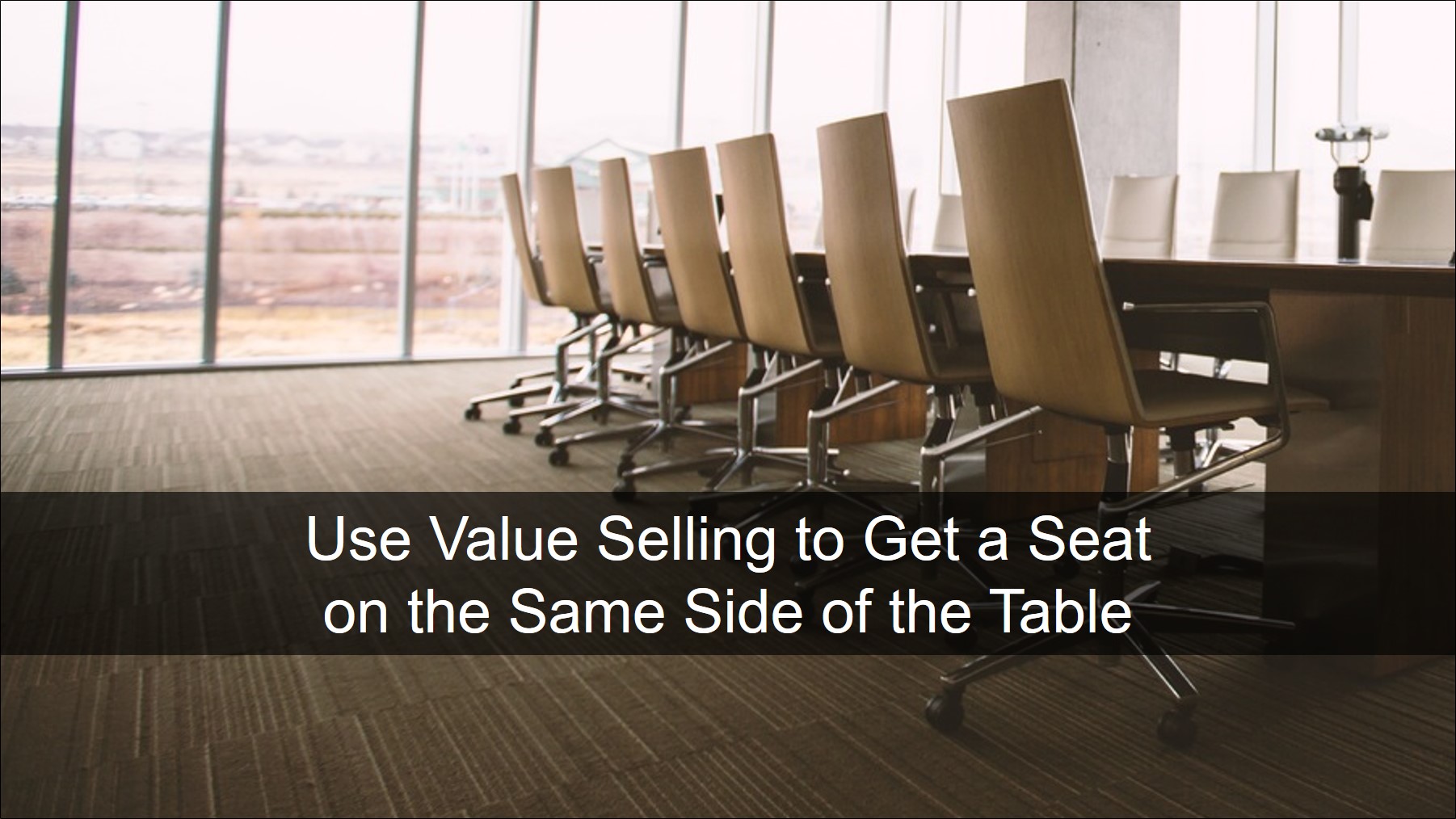
Marketers and sellers need to know how much their offering is worth to customers. This knowledge helps acquire qualified leads and close more deals. Unsurprisingly, buyers want the same information and need to know how much your offering can lower costs and grow revenue.
This dynamic is not about getting a seat at the table but rather, having a seat on the same side of the table. By understanding customer needs and personalizing your offering’s value to each customer, you can have a collaborative conversation around product features, benefits, service levels, and use cases, and how they relate to value.
Price vs. Value
Vendors that can only tell buyers, “We can save you money” are at a huge disadvantage. The most successful vendors are able to say, “We can you save $2 million in network infrastructure costs and $1 million in labor costs.” Customers need this level of detail to make a knowledgeable, strategic decision. Not only are they comparing your offering to those of competing vendors and next best alternatives, but against other internal projects seeking budget approval.
Value can be only defined by focusing on the customer’s problem, its size and scope, and the future outcome. Notice that I did not say anything about product, service, or offering. Value is the financial summation of benefits a customer receives after taking action to solve their problem, and it is always expressed in monetary terms.
Importantly, value is independent of price. In this context, price is broadly defined to include the purchase price and all other investments the customer makes to implement a solution. The difference between the value and price is the customer’s incentive to purchase. Therefore, raising or lowering prices changes a customer’s incentive but it does not change the value.
Demonstrating Value
An ROI tool is a terrific tool to estimate each customer’s unique expected value and incentive to purchase. Sellers can meet with buyers and use the tool to develop a business case for change around each buyer’s specific environment. This value selling approach helps sellers defend their price, shorten the sales cycle, and close more deals.
Buyers can begin estimating an offering’s value early in the buying process using self-service value calculators made available on the vendor’s website. After analyzing the resulting value report, buyers can self-qualify and share their findings throughout their organization to cultivate early interest in the solution. For marketers, these tools create demand and generate high priority leads.
Marketers and sellers also can invest in case studies to help buyers assess an offering’s value. Ideally, case studies would be available for each target customer segment to give buyers in each segment insight into the potential value an offering can deliver.
Conclusion
Understanding the value, in monetary terms, an offering creates for customers is critically important to marketers, sellers and buyers. All parties involved can benefit from using relevant content to have collaborative, informed discussion. Vendors can deploy value-based content to capture leads, avoid price discounting and convert them to deals. Buyers can use a business case to answer internal cost justification questions and obtain budget approval.
Resources
Connect with David Svigel on LinkedIn.
Join the Value Selling for B2B Marketing and Sales Leaders LinkedIn Group.
Visit the ROI Selling Resource Center.









